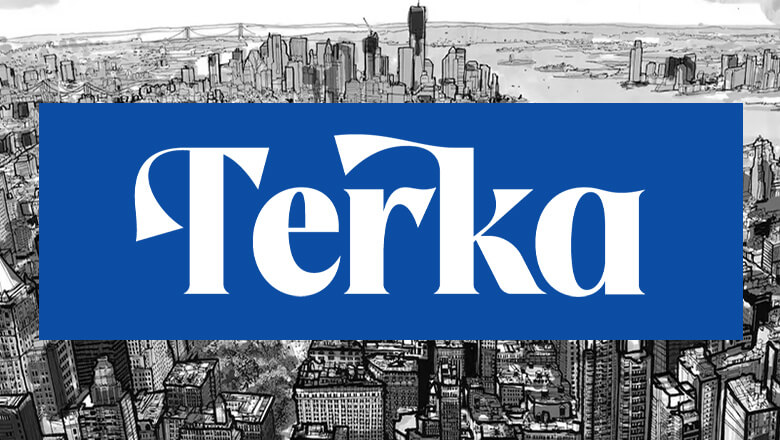
views
What is a Scandinavian hairline?
A Scandinavian hairline is a technique where a person’s hairline and baby hairs are lightened. To achieve the look, a stylist will typically take a ⁄2 inch (13 mm) section along the hairline and apply bleach or lightener to it. The lightened hair should only be one or two shades lighter than the rest of the head so it gives off a soft, natural, and sun-kissed vibe. This technique is usually done alongside a regular hair coloring or highlighting service, as the Scandi hair look is most popular among people who already dye their hair a light blonde shade. The Scandinavian hairline aims to recreate the natural bleaching effect of the sun on Scandinavian people’s hair, which is stereotypically white-blonde to begin with and lightens around the hairline during summer months.
What hair colors can try the Scandi hairline?
While most popular on blondes, the Scandi hairline can work for all hair colors. The typical Scandinavian look is most often seen on blondes, but it’s completely possible to adjust this style to any hair color with the help of a pro stylist. For brunettes or redheads, for example, a stylist might swap out bleach blonde for soft caramel or golden highlights. The Scandinavian hairline also looks great on gray hair, since the blonde mixes with the gray to make the grow-out look very subtle and natural. While just as flattering, keep in mind that these customizations won’t give the same exact effect as the bleached Scandi hairline would on blondes. It will still give a sun kissed effect, but it won’t have that stereotypically Nordic and white-blonde look. For darker hair, however, a Scandinavian hairline could cause too much contrast and look unnatural. However, an experienced stylist should be able to customize the look and add a shadow root to soften the contrast in the hair. But, it is important to note that darker hair will take more effort to lighten, if that’s the goal. Professional hair stylist Sarah Kosakowski says that dark hair “will take a minimum of 3-4 rounds of lightener in order to get close to…a light blonde color.”
Scandinavian Hairline Maintenance
Get your Scandi hairline touched up every 8-12 weeks. While 8-12 weeks is about how long the Scandinavian hairline lasts, you should consult with your stylist about exactly when you should come in for a touch-up. Licensed cosmetologist and hair loss practitioner Courtney Foster recommends waiting until you have “some new growth, at least an inch to an inch and a half, but preferably 2 inches. That way, you don't run the risk of overlapping the hair color onto the old hair color because that can cause breakage and it can also cause discoloration and lines of demarcation.” If there’s a big difference between your Scandi highlights and your natural color, then there might be a more drastic demarcation line as your hair grows out, so you’ll want to get touched up or blended more often. However, if your Scandi hairline has a pretty natural blend already, the regrowth should be fairly soft and require less maintenance. Depending on your colorist and salon location, a Scandinavian hairline will typically cost around $50-$100 for the initial appointment, which doesn’t include future touch-ups.
Use color-protectant and conditioning products to keep your hair vibrant. Use a purple shampoo to minimize brassiness in your strands, especially if you’re not a natural blonde. Switch to a color-protecting conditioner and explore similar products like a pre-shampoo spray or hair mask. Apply deep-conditioning products at least once a week to keep your hair hydrated and healthy. When washing your hair, use lukewarm water to help prevent your color from fading.
Avoid heat styling as much as possible. Heat styling is dangerous for any type of hair, as it can cause breakage and damage to your locks if overused. However, baby hairs and the hairs around the hairline are especially prone to breakage, so you need to be as gentle as possible with these strands and avoid heat styling after bleaching these areas. If you do need to heat style your hair, be sure to use a high-quality heat protectant and avoid applying heat to the areas around your hairline.
How to Get the Scandinavian Hairline
Tell a stylist you want a Scandi hairline and bring reference photos. Start by telling your stylist that you want a Scandinavian hairline or “baby lights.” Provide visuals so that your stylist knows exactly what your expectations are and what look you want. Your stylist should ask you about how light you want to go around your hairline, so make sure to choose shades that are just slightly lighter than your normal color. Ask your stylist to make the look as natural-looking as possible—you want soft, seamless blending between the base color and highlights. Make sure to have a thorough discussion with your stylist about whether or not the Scandi hairline will work for your hair color and features. Also, it’s worth asking your stylist about further maintenance you’ll need to do to keep your hair healthy and looking good with the Scandi hairline.
Your stylist will paint lightener onto your hairline to achieve the Scandi look. A professional colorist will most likely take you to the shampoo bowl and apply a bonding or protective treatment to your hair. Then, they’ll section off the baby hairs that frame your forehead and dab lightener directly onto these hairs and along your hairline. Finally, your stylist will rinse the excess lightener out of your hair and off of your skin, leaving you with a brilliant, sunkissed Scandinavian hairline! Follow any additional maintenance or styling instructions that your stylist provides at the end of your appointment. Scandinavian hairlines are most often done as an add-on service to a coloring appointment for blonde hair. If that’s the case for your appointment, your stylist will most likely apply your Scandi hairline at the very end of your service.
Visit a pro colorist for the Scandi hairline rather than doing it yourself. While it may be tempting to try to DIY the Scandinavian hairline at home, it’s recommended to “always consult with a salon professional,” advises professional hair stylist Steven Waldman. The bleach or lightening dye used for a Scandinavian look is applied very close to the hairline, so it may irritate the eyes if applied incorrectly. Also, baby hairs are very susceptible to damage, so they may break off if you attempt the bleaching yourself.
What’s the difference between a Scandinavian hairline and a money piece?
A money piece is a solid streak, while the Scandi look is an overall lightening. Money piece highlights typically feature a large section or chunk of hair that’s lightened from root to tip. These highlights aren’t meant to blend in and they usually stand out against the rest of the hair. Conversely, the Scandi hairline aims to blend seamlessly with a head of hair and provide subtle, natural-looking highlights.




















Comments
0 comment